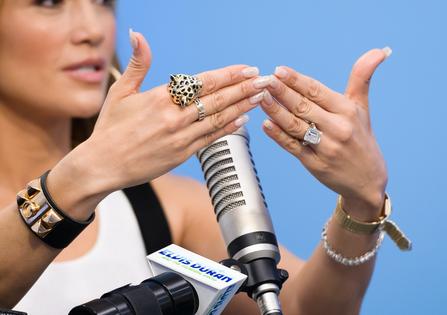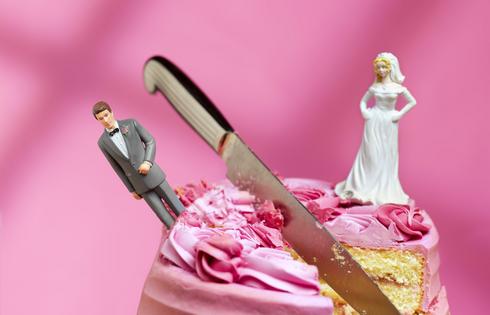Who keeps the engagement ring after a breakup? 2 law professors explain why you might want a pre-nup for your diamond
Published in Business News
When Jennifer Lopez and Ben Affleck got engaged the first time, in 2002, he gave her a very pricey ring. That engagement ring was reportedly worth as much as $2.5 million, made by luxury jeweler Harry Winston and adorned with a 6.1-carat pink diamond.
After the movie stars broke up in 2004 without getting married, J. Lo said she intended to return the ring “quietly” to Affleck. Whether or she ever did that or not, was Lopez entitled to keep the that rock or any of the others she got from her numerous ex-husbands and former fiancés?
The answer can matter to anyone who is engaged, married – or even thinking about tying the knot. No one knows for sure how many engagements end in a breakup, although there are estimates that roughly 1 in 5 do so.
As law professors who teach property and family law, we frequently talk to students – and our own relatives – about gifts and marriage. Students often ask us who owns the engagement ring if couples don’t get married or if they eventually divorce. They also want to know what happens if the ring is stolen.
While taxes, laws and insurance are not very sexy topics, marriage has never been only about romance. It’s also a partnership with economic repercussions.
Engagement rings were fairly rare until about 100 years ago, even though the first diamond engagement ring was apparently given by Emperor Maximilian to Mary of Burgundy in 1377. But it wasn’t until the end of the Great Depression that a sophisticated advertising campaign created a market for diamond engagement rings in the United States.
By 1940, 10% of brides received diamond rings. That share jumped to 80% by 1990.
Perhaps propelled by the belief that a ring should cost as much as a man earns in three months, expensive diamond engagement rings grew in popularity from 1935 to 1965.
Law professor Margaret Brinig has found that legal changes coincided with the new customs around the mid-20th century.
Specifically, Brinig points to the abolition of the lawsuits known as “breach of promise” actions, which could be filed after broken engagements.
That is, brides could keep rings – even expensive ones – without getting married.
This new convention, Brinig has written, could have served as a form of compensation if the bride had lost her virginity after getting engaged. Should the marriage not happen, she’d at least have something of value to hold onto.
In the second half of the 20th century, U.S. divorce laws changed, and courts stopped determining who was to blame when married couples broke up. In what came to be known as no-fault divorce, neither spouse had to prove the other had cheated or been cruel to them.
And, as law professor Rebecca Tushnet documents, many courts have applied a similar “no-fault” framework to broken engagements. That means it doesn’t matter who broke it off, or why.
In addressing that rule in 1997, three judges on a Pennsylvania superior court drew on the story of Adam and Eve, meandered into Roman times and then announced “the gift of the ring to [the bride] at the time of their betrothal was subject to an implied condition requiring its return if the marriage did not take place.”
And that was in a case in which a man who had proposed to his girlfriend called off the engagement twice.
Courts in Iowa, Michigan, Minnesota, Mississippi and other states have issued similar rulings.
But the Supreme Court of Montana held in 2002 that an ex-fiancée could keep her engagement ring after a breakup. Noting that women “often still assume the bulk of pre-wedding costs,” the court expressed concerns that treating engagement rings as gifts conditional upon marriage could perpetuate gender bias.
And a Texas court ruled a year later that someone who gave an engagement ring to his fiancée and then later called off the wedding was not entitled to its return.
In California, a state law enacted in 1939 provides that the ring must be returned if the marriage is broken off by mutual consent or the person who received an engagement ring initiates the breakup.
Regardless of where you live, if you’re legally obligated to return an engagement ring and fail to do so, you may be on the hook for monetary damages. This can lead to financial hardship when rings are lost, stolen or intentionally thrown away.
If one person keeps the ring after a breakup, there may be gift tax consequences for the person who bought the ring. But that’s only if the ring costs more than $17,000, and there are a lot of variables and loopholes that can reduce the chances that a jilted ex would ever owe any money to the Internal Revenue Service.
Anyone can make gifts worth up to $17,000 per year, as of 2023, to anyone else without incurring consequences. Gifts worth more than that threshold are officially subject to a gift tax, and the IRS requires that taxpayers report the amount of those gifts annually.
As of 2023, taxpayers also may give away gifts totaling $12.92 million during their whole lifetimes, or after death in their wills, with no tax-related consequences.
But gifts of $17,000 or more will eat into that credit.
Anyone who gets engaged can insure a ring.
And while no readers should see this article as a source of personal legal advice, we do note that engaged couples can set their own rules. Courts will generally enforce written agreements reached between two people who plan on getting married that stipulate who gets the ring after a breakup.
Couples can draft or sign a ring-related contract, particularly if that piece of jewelry has great sentimental or monetary value.
We understand that such paperwork might not materialize during a time of bended knees and joyful celebration. We also get that what people do with their rings when an engagement is called off isn’t just a matter of what the law requires.
Perhaps not surprisingly, we have found relatively few cases in which someone sued an ex over this issue.
Not even Ben Affleck did that. Had he tried to sue J. Lo in 2004 in a California court, he might have won. But his success would have turned on how the engagement ended.
Besides, as you may have heard, the high-profile couple reunited in 2021 and married in 2022.
The second engagement ring Affleck gave Lopez is reportedly worth $5 million – probably double that of the first one. J. Lo gets to keep that huge, rare green diamond forever now that she’s saying her name is Mrs. Jennifer Lynne Affleck.
This article is republished from The Conversation, an independent nonprofit news site dedicated to sharing ideas from academic experts. If you found it interesting, you could subscribe to our weekly newsletter.
Read more:
In the US, fairy-tale royal weddings clash with reality
Diamonds are forever – whether made in a lab or mined from the earth
The authors do not work for, consult, own shares in or receive funding from any company or organization that would benefit from this article, and have disclosed no relevant affiliations beyond their academic appointment.















Comments